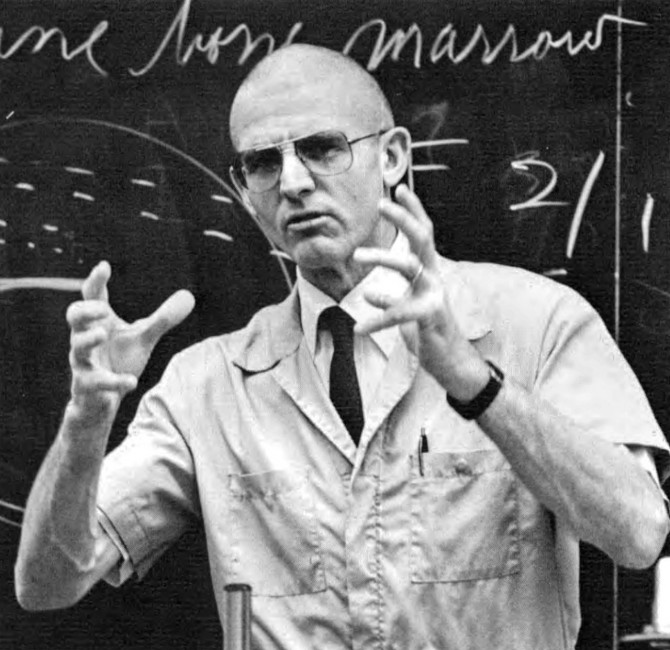Legendary veterinary neurologist de Lahunta dies at 88
Dr. Alexander de Lahunta, D.V.M. ’58, Ph.D. ’63, emeritus James Law professor of anatomy, considered the founder of veterinary neurology, died Aug. 17 at his home in Rye, New Hampshire. He was 88.
Regarded as a legend at Cornell’s College of Veterinary Medicine and in the wider realm of veterinary sciences, de Lahunta was world-renowned and a pioneer in the field of veterinary neurology. He was also an expert anatomist. Affectionately nicknamed ‘Dr. D.,’ de Lahunta was also a beloved and influential teacher whose students said his classes changed their lives.
“The loss of our beloved Dr. D. is a heavy one, both for our community and for the veterinary profession,” said Dr. Lorin D. Warnick, Ph.D. ’94, the Austin O. Hooey Dean of Veterinary Medicine. “While we grieve his passing, we also celebrate the wisdom and influence he shared with the world.”
Born in Concord, New Hampshire, in 1932, he received his D.V.M. degree in 1958 from Cornell. He worked as a veterinarian in Concord from 1958 to 1960, and returned that year to Cornell to start a doctoral program at the veterinary college, where he also served as an instructor of anatomy. Upon completing his doctorate in 1963, the veterinary college hired him as an assistant professor.
Over the course of his career, de Lahunta served as chief of the medical and surgical section of the Veterinary Medical Teaching Hospital (now the Cornell University Hospital for Animals) from 1975-76 and as hospital director from 1976-82. He also chaired the Department of Clinical Sciences from 1977-86, and the Department of Anatomy from 1986-91. He became the James Law Professor of Anatomy in 1992, before he retired in 2005.
His contributions to the field of veterinary neurology include the discovery of many neurological disorders in animals. He published five foundational textbooks and more than 260 peer-reviewed papers. He was given the Robert W. Kirk Distinguished Service Award of the American College of Veterinary Internal Medicine in 2000, and was granted honorary membership by the American College of Veterinary Pathologists, also in 2000, and the Royal College of Veterinary Surgeons in 2005. His expertise as an anatomist led to him receiving the inaugural American College of Veterinary Internal Medicine (ACVIM) Lifetime Specialty Achievement award this year.
His contributions as a teacher spanned veterinary anatomy, neuroanatomy, applied anatomy, clinical neurology, neuropathology and embryology. His legendary 2 a.m. clinical exams of his patients were often attended by students, interns and residents.
“I knew Dr. de Lahunta from when I was a veterinary student and was incredibly fortunate to have him as a teacher and role model, as were countless others,” said Dr. Margaret McEntee, D.V.M. ’86, the Alexander de Lahunta Chair of Clinical Sciences and professor of oncology in the College of Veterinary Medicine. “He was quite simply one of a kind.”
In a nomination letter for his ACVIM award, colleagues described him as “the single greatest and most dedicated teacher we have ever known.” For his efforts over 42 years, he won the Norden Distinguished Teaching Award four times, and was recognized as the best teacher in basic sciences in 1991 by the Student American Veterinary Medical Association, the national organization for veterinary students.
“He was dedicated to his profession beyond belief and especially to the well-being of patients and teaching the next generation of practitioners and clinicians,” said Dr. Susan Fubini, senior associate dean for academic affairs and professor of surgery. “All of us remain in awe of his seemingly endless energy, passion for discovery and astonishing intuition.”
De Lahunta was predeceased by his wife Patricia de Lahunta in 2011. He is survived by his partner, Shirley Reed Dutton, four children and nine grandchildren.
All services will be private. Donations may be made to the Rye Public Library in his honor.


